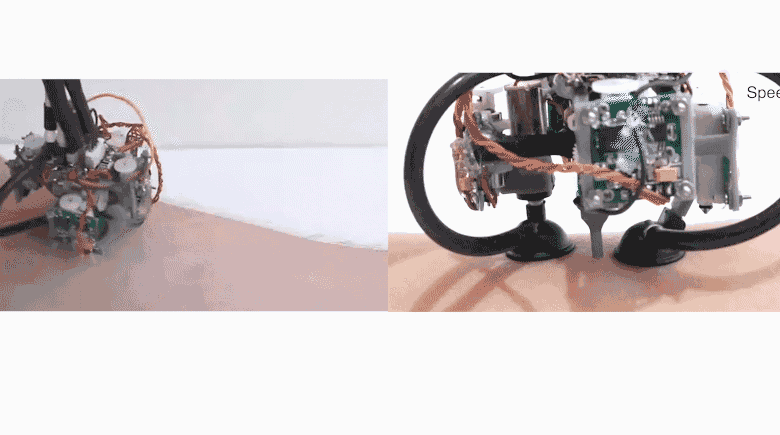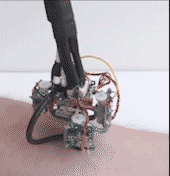
Systematically mapping the mechanical properties of skin and tissue is useful for biomechanics research and disease diagnostics. For example, later stage breast cancer and lymphoma manifest themselves as hard nodes under the skin. Currently, mechanical measurements are done manually, with a sense of touch or a handheld tool. Manual measurements do not provide quantitative information and vary depending on the skill of the practitioner. Research shows that tactile sensors could be more sensitive than a hand. We propose a method that uses our previously developed skin-crawling robots to noninvasively test the mechanical properties of soft tissue. Robots are more systematic and repeatable than humans. We explore the use of two miniature sensors: an indenter and a cutometer. We developed designs for each sensor to integrate them with our miniature skin-crawling robot. We fabricated a variety of tissue samples in order to collect training data with our sensors on tissues with known mechanical properties and lump characteristics. Using the data collected with a cutometer or indenter as well as the ground truth information of the tissue samples, we trained a convolutional neural network to classify the size and depth of the lumps. The classification works with 98.8% accuracy for cutometer and 99.6% for indenter for lump size with a diameter of 0 to 10 mm embedded in depth of 1 to 5 mm in a simulated tissue. We conducted a limited evaluation on a forearm, where the robot imaged dry skin with a cutometer. We hope to improve the ability to test tissues noninvasively, and ultimately provide better sensitivity and systematic data collection.

